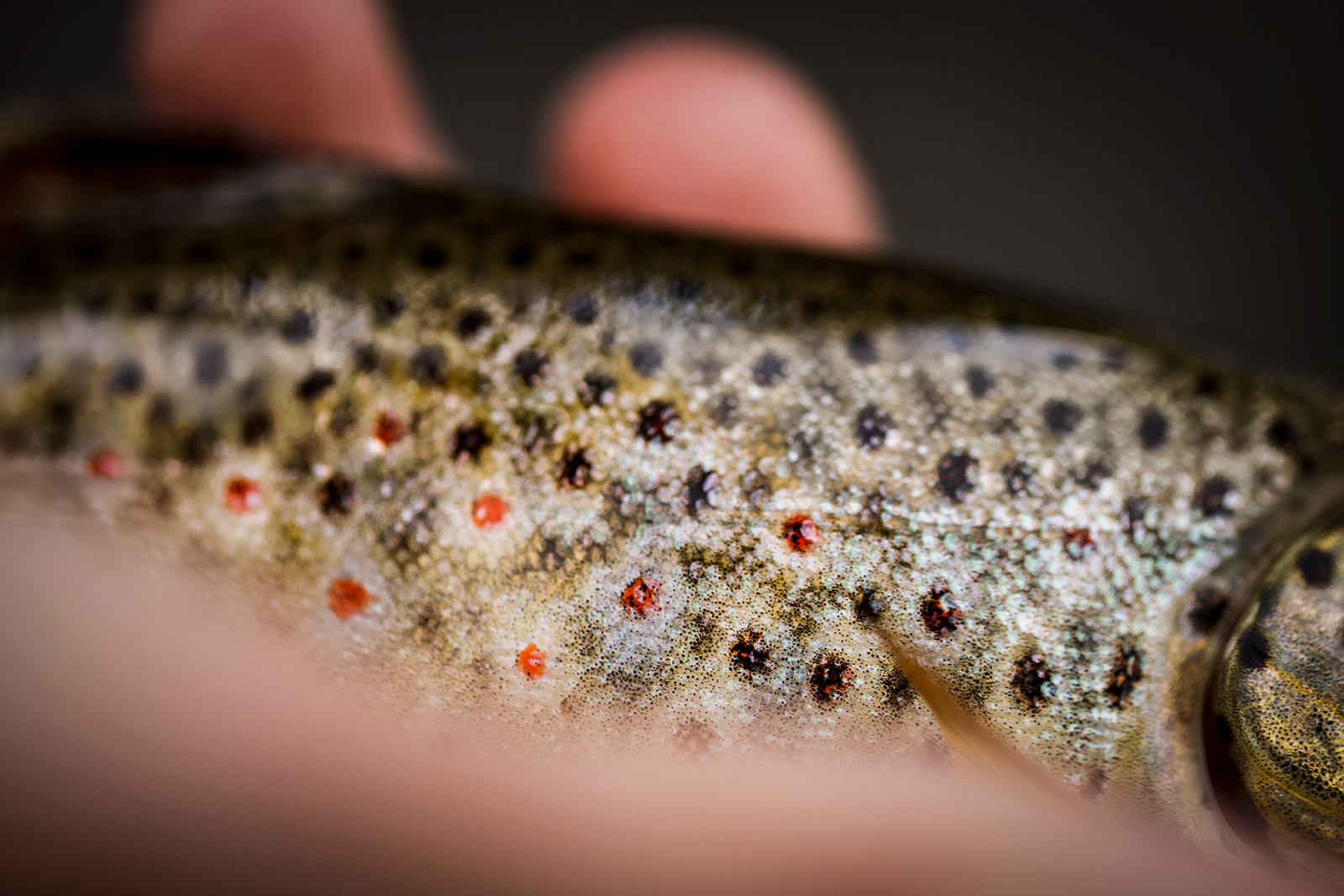FWP Investigates Illegal Introduction of Brown Trout in Flathead River
After an angler hooked a brown trout upstream of Pressentine Bridge last month, officials are trying to determine how the nonnative species ended up in a river system, as well as the extent of its invasion
By Tristan Scott
Officials with the Montana Department of Fish, Wildlife and Parks still don’t know how a nonnative brown trout ended up in the Flathead River upstream of Pressentine Fishing Access last month. But given the river system’s history of circumventing brown trout invasions, they say the recent detection was most likely the result of an illegal introduction by a so-called “bucket biologist.”
As fisheries biologists investigate the matter and await the results of environmental DNA (eDNA) sampling to gain a better understanding of the scope of the invasion, they’re calling on local anglers to submit any additional brown trout caught in the drainage.
“This method will help identify areas where brown trout may be present, guiding future management actions,” according to an FWP press release the agency issued Monday.
“FWP strongly urges anglers who catch a brown trout in the Flathead River or its tributaries to kill the fish immediately and report the catch to the FWP Region 1 office at 406-752-5501,” the release states. “Anglers are asked to provide the fish as well as the location and date of the catch to assist in monitoring efforts.”
FWP Fisheries Management Biologist Kenny Breidinger said a local fishing guide on June 9 reported that a client had caught a brown trout on the Flathead River between Pressentine and Teakettle fishing access sites. Although the outfitter and his client killed the fish, they did not keep it, Breidinger said, eliminating any opportunity for the biologist to examine the water chemistry stored in the fish’s ear bone, or otolith, and trace its life history to a possible origin source.
They did share a photograph of the fish with Breidinger, who confirmed it was a brown trout.
“That’s the only hard evidence we have at this point,” Breidinger said. “In the early stages of an illegal introduction, it’s kind of like looking for a needle in a haystack. The Flathead River is a big river, which is why we’re really hoping to have anglers help us out.”
In addition to canvassing the local angling community, FWP also acquired eDNA sampling equipment from the agency’s partners at the U.S. Forest Service, using the instruments to capture water samples in the Flathead River between the Teakettle Fishing Access and Old Steel Bridge. They also collected water samples from Mill Creek, a tributary of the Flathead River that brown trout invaded more than 25 years ago after an inadvertent release from the Creston National Fish Hatchery.
Following that detection, FWP launched an intensive suppression effort to remove the escaped brown trout, Breidinger said, determining that they eliminated the threat and prevented a breeding population from establishing itself. Although there’s been no evidence that a spawning population of brown trout persists in Mill Creek, Breidinger said the eDNA samples will rule out the possibility that “there could be a spawning population of brown trout in the Flathead that we don’t know about.”
“We think that’s pretty unlikely,” Breidinger said. “If there were a reproducing population of brown trout, I think we would know about it. We are pretty confident that this was a result of an illegal introduction and not from some unknown population.”

As FWP awaits the results of the eDNA samples, the agency’s fisheries biologists hope to gather additional information through word of mouth, and to educate the public about the ways in which invasive species can disrupt aquatic ecosystems by altering food webs, reducing biodiversity and threatening native species critical to Montana’s fisheries.
For instance, brown trout can harm native trout species, such as bull trout and westslope cutthroat trout, by outcompeting them for resources and preying on juvenile fish.
Moving live fish from one waterbody to another is also illegal and can have devastating ecological, recreational and economic impacts. Brown trout are identified by their golden brown to yellow-brown color, with dark spots often surrounded by lighter halos, and sometimes with red or orange spots.
“Protecting our native trout populations is a priority,” FWP Regional Fisheries Manager Mike Hensler said in a prepared statement. “Brown trout pose a threat to native species in the Flathead drainage, and we need the public’s help to manage this invasive species.”
Although brown trout are common on sections of the lower Flathead River below SKQ Dam, the impoundment creates an impenetrable barrier containing the nonnative fish species from spreading through the Flathead River system, which is a headwater basin to the Columbia River system.
Jim Vashro, former fisheries manager for FWP Region 1, said brown trout have also been established in Thompson River and the Kootenai River downstream of Kootenai Falls. In both instances, the species arrived in the river systems through illegal introductions.
“Unfortunately, this latest detection isn’t the only case where someone has moved brown trout around,” Vashro said. “At this point, any detection of brown trout in the Flathead River has got to be some sort of bucket biology.”